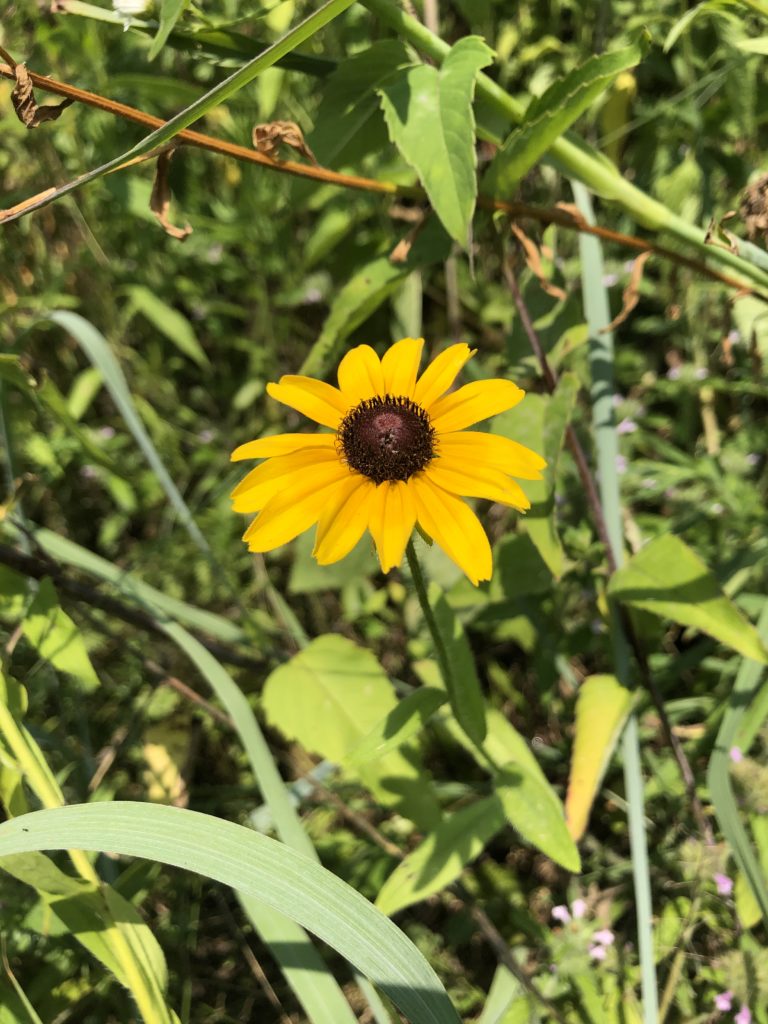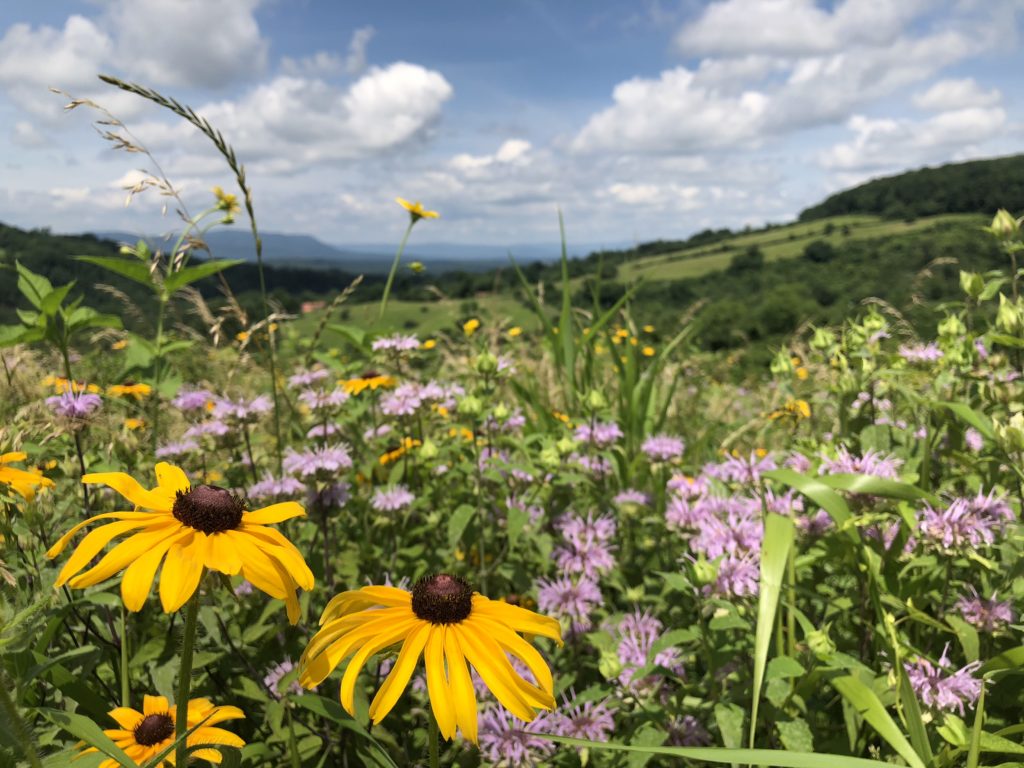
What’s in Bloom | Black-eyed Susan
July 14, 2020
Black-eyed Susan (Rudbeckia hirta) is a warm season forb native to most of the continental United States and Southern Canada. This bright wildflower can be either perennial or annual and grows best in full sun. It can be found in prairies, pastures, roadsides and forest edges and is tolerant of moderately dry and acidic conditions.
Black-eyed Susan plants grow up to 3 feet tall and have oppositely arranged leaves about 4 inches long. The stems and leaves are hairy giving the plant a slightly rough texture. The blooms are singular, bright yellow, and daisy-like with a dark brown central cone. The blooms are up to 3 inches in diameter and appear at the very top of the stem. Black-eyed Susan is typically in bloom all summer and into early fall. After the flower dies, seeds can be cultivated from the mature central seed head.
Benefits to Biodiversity | Black-eyed Susan provides resources and food to a wide array of species. White tailed deer (Odocoileus virginianus) will graze on the vegetation during winter. The flowers provide pollen and nectar to many species of bees including Small Carpenter bees (Ceratina sp.) and Green Metallic bees (Agapostemon sp.) as well as butterflies and other pollinators. The seeds provide food for songbirds and other species such as Bobwhite Quail (Colinus sp.), and Wild Turkey (Meleagris gallopavo).
The benefits to biodiversity and the beautiful flowers make Black-eyed Susan an excellent addition to any garden space!


